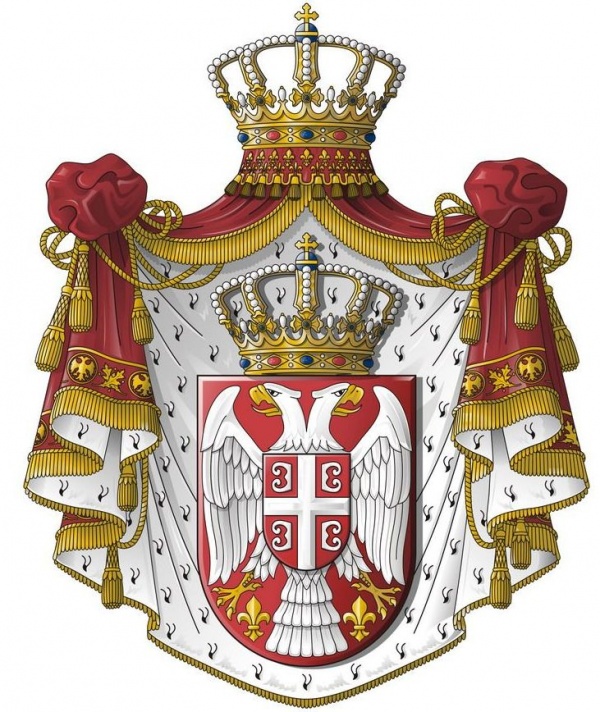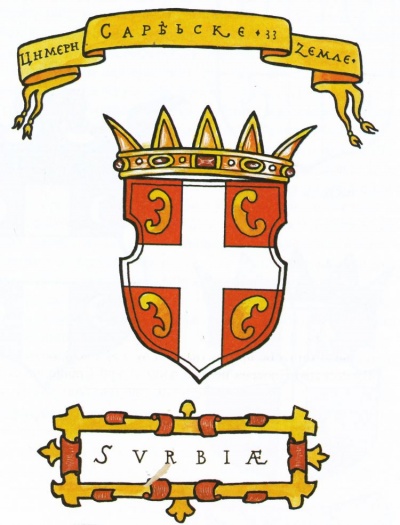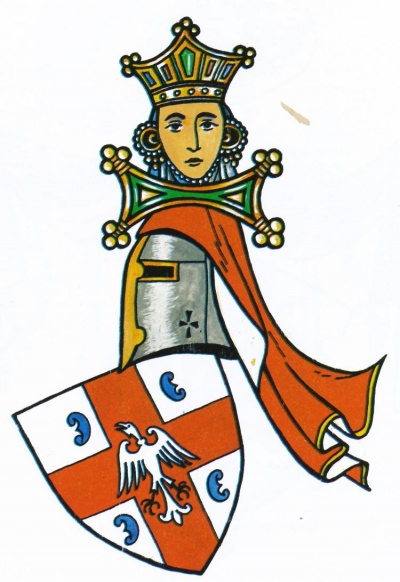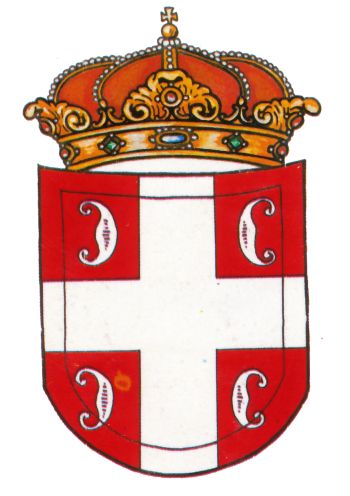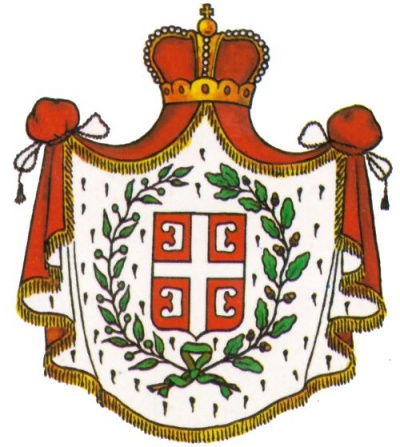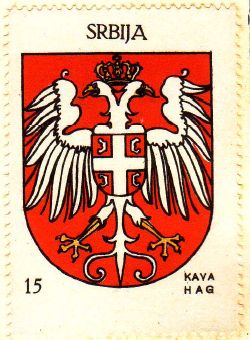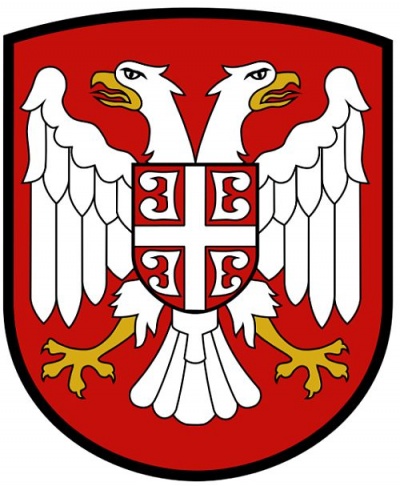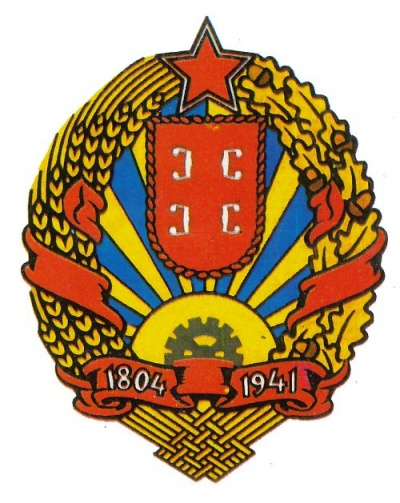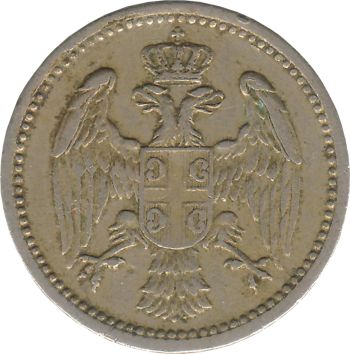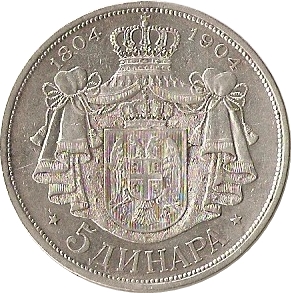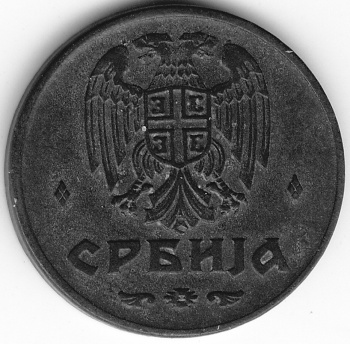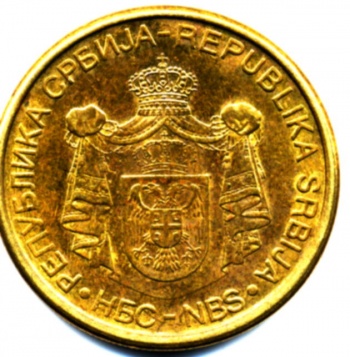The National Arms of Serbia
| Heraldry of the World Civic heraldry of Serbia - грбови Србиjе |
National arms of SERBIA
Official blazon
Origin/meaning
The arms were officially granted on June 16, 1882 and again in 2004.
The present arms of the Republic of Serbia, are identical to the old arms of the Kingdom of Serbia, which were granted in 1882.
The main inescutcheon shows the historical arms of Serbia, a white cross with four firesteels. These arms date from the 14th century, the exact origin is not known, even though a number of stories exist.
The arms are definitely shown as national arms in the Korenić-Neorić Armorial (1595), which shows the coat of arms of Serbia (Svrbiae) as a white cross over a red background, with four firesteels, also depicting the Mrnjavčević noble house with the same design, with inverted colours and the Serbian eagle in the center of the cross.
| The arms in the Korenić-Neorić Armorial |
The inverted arms in the Korenić-Neorić Armorial |
Ever since the white cross and the firesteels have been the arms of Serbia.
| The arms seen in a 18th century armorial. |
The double-headed eagle also dates to the 14th century as a symbol for the Serbian Kings. It was already used previously, probably derived from the Byzantine Emperors. During the reign of Stefan Dušan (1331–1345), the double-headed eagle was used on everyday objects and state related documents, such as seals and proclamations.
The two symbols were only combined in the 1882 arms.
Principality of Serbia (1815-1882)
The principality of Serbia was a semi-independent state within the Ottoman Empire, founded in 1815 after the Serbian uprising. The Principality was acknowledged by the Ottoman Emperors and graudlly received more and more rights, making it a de facto independent state.
The principality used the Serbian cross as its arms, with a royal mantle.
| The arms of the Principality of Serbia. |
The principality existed until 1882 when the Kingdom of Serbia was established.
Kingdom of Serbia (1882-1918)
The Kingdom of Serbia combined for the first time the eagle and the cross as described above. The arms used are the same as the current arms, see above.
The Kingdom of Serbia was abolished in 1918 and became part of the Kingdom of Yugoslavia.
During the Yugoslav Kingdom the arms of the different former entities/regions were still used, see the arms for Serbia below.
| The arms in the Coffee Hag album +/- 1932 |
Government of National Salvation (1941-1944)
During the German Occupation in the Second World War a local government was established with the name Government of National Salvation. This government used the arms of the former Kingdom, but not the crown or mantling.
| The arms from 1941-44 |
Socialist Republic of Serbia (1947-1992)
During the Yugoslav period the Serbian republic used a typical communist-style logo with a small shield showing the four firesteels, but without the silver cross. The eagel, being a Royal symbol, was also removed.
| The arms from 1947-2004 |
The same arms were used by the Republic of Serbia from 1992-2004. In 2004 the current arms above were adopted.
Use on coins
| The arms on a coin from 1904 |
The arms on a coin from 1904 |
| The arms on a coin from 1942 |
The arms on a coin from 2008 |
Contact and Support
Partners:
Your logo here ?
Contact us
© since 1995, Heraldry of the World, Ralf Hartemink 
Index of the site
Literature : Milicevic, 1995.

